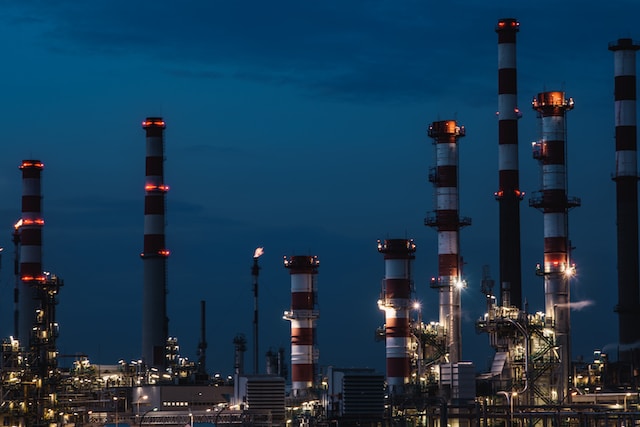World’s Oldest, Largest Diesel Engine
Back in the day, Burmeister & Wain (B&W) built the CM 884WS-150. It’s an eight cylinder diesel engine that still produces 15,000kw (22,500 hp) and was the largest in the world from 1932 to 1962. The following video shows the engine starting up.
The World’s Largest Diesel Engine Today
The following is a summary of information provided by Wartsila-Sulzer, the Finnish manufacturer of the largest diesel engine in the world today. The engine is used on the Emma Maersk cargo ship pictured below. A full line-up of Wartsila Marine Diesel Engines can be found here.
The largest in the current line of Wartsila-Sulzer diesel engines is a turbocharged two-stroke low-speed engine, used to power giant supertankers and cargo ships worldwide that run on heavy fuel oil. The largest version is 14-cylinders and is 44.3 feet (13.5m) high and 87.25 feet (25.6m) long, weighs over 2,300 tons and produces 80,080 kW. The engine uses 140 bar compression or over 2,000 pounds per square inch on the piston, about 1,091 tons of pressure on the piston /rod at the top of the compression stroke.
The engine uses “rail technology” that has done away with the traditional camshaft, chain gear, fuel pumps and hydraulic actuators, thereby providing better performance, lower revolutions per minute, lower fuel consumption, and lower emissions.
The engine has crosshead bearings and an always-vertical piston rod that provides a tight seal under the piston. As a result, the lubrication of the engine is split: the cylinders and the crankcase use different lubricants, each being specialized for an dedicated to its role. Cylinders are lubricated by continuous, timed injection of consumable lubricant which is formulated to protect the cylinders from where and to neutralize the acids formed during combustion of the high-sulfur fuels. The crosshead design reduces sideways forces on the piston, keeping diametral cylinder line where in the order of only about 0.3 mm per 1000 hours.
The descending piston is used to compress incoming combustion air for the adjacent cylinders which also serves to cushion the piston as it approaches bottom dead center to remove some load from the bearings. The engine is unit flow-scavenged by way of exhaust valves that are operated by electronically-controlled, common-rail hydraulics, thus eliminating the camshaft.
World’s Largest Diesel Engine Tomorrow
In the pipeline is the MV CSCL Globe, the world’s largest container with a capacity of 19,000 TEUs that will be propelled by a MAN B&W 12S90ME-C Mark 9.2 low-speed two-stroke engine that produces 69,720 kW @ 84 rpm and is 56 feet (17.2 m) tall and 193.5 feet (59m) long. This makes it taller and longer than the Wartsila engine mentioned above. This ship will be put into service in 2015.
Related articles on IndustryTap:
- McLaren Not Interested In Honda Supercar Engines… Executive Says “We Are An Independent Company.”
- Being the Only Engineer in a Business Meeting (Video)
- Thermoelectric Power Generation Reduces Jet Engine Noise, Powers Mars Curiosity & More
- Neurotechnology: Understanding The Brain Using Engineering Design Principles
- Time Lapse: Mi-24 Attack Helicopter Main Gear Box & Engine Install
- New School Surfer Wagon Has a 700-Horsepower Engine & Enough Room For 2 Surfboards
- Boost Mileage with Diesel Engines … Just Ask Volkswagen!
- Stanford Engineers Create the Foldscope, a $1 Paper Microscope
- Nissan Engineers Create the First Self-Cleaning Car
- Nano-Engineered Super Hydrophobic Materials Mimic Plant’s “Lotus Effect”
References and related links:







